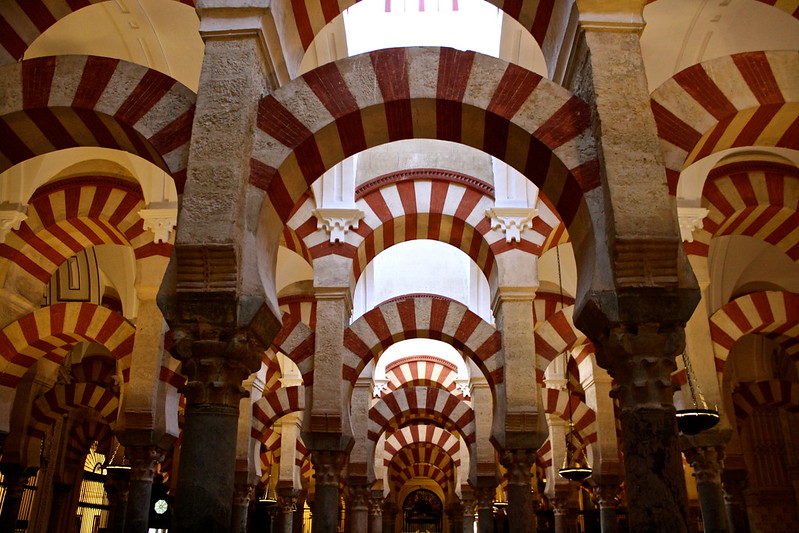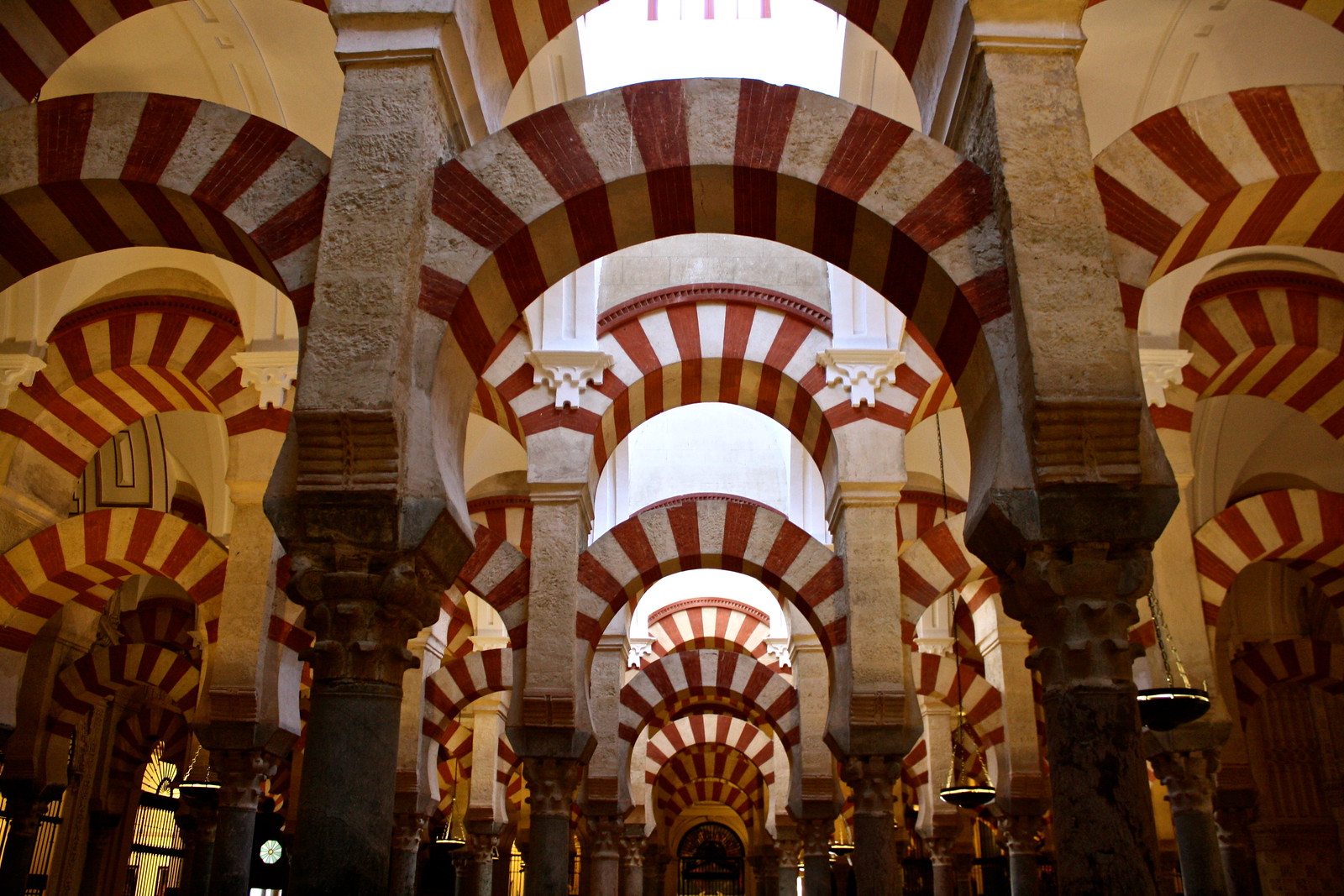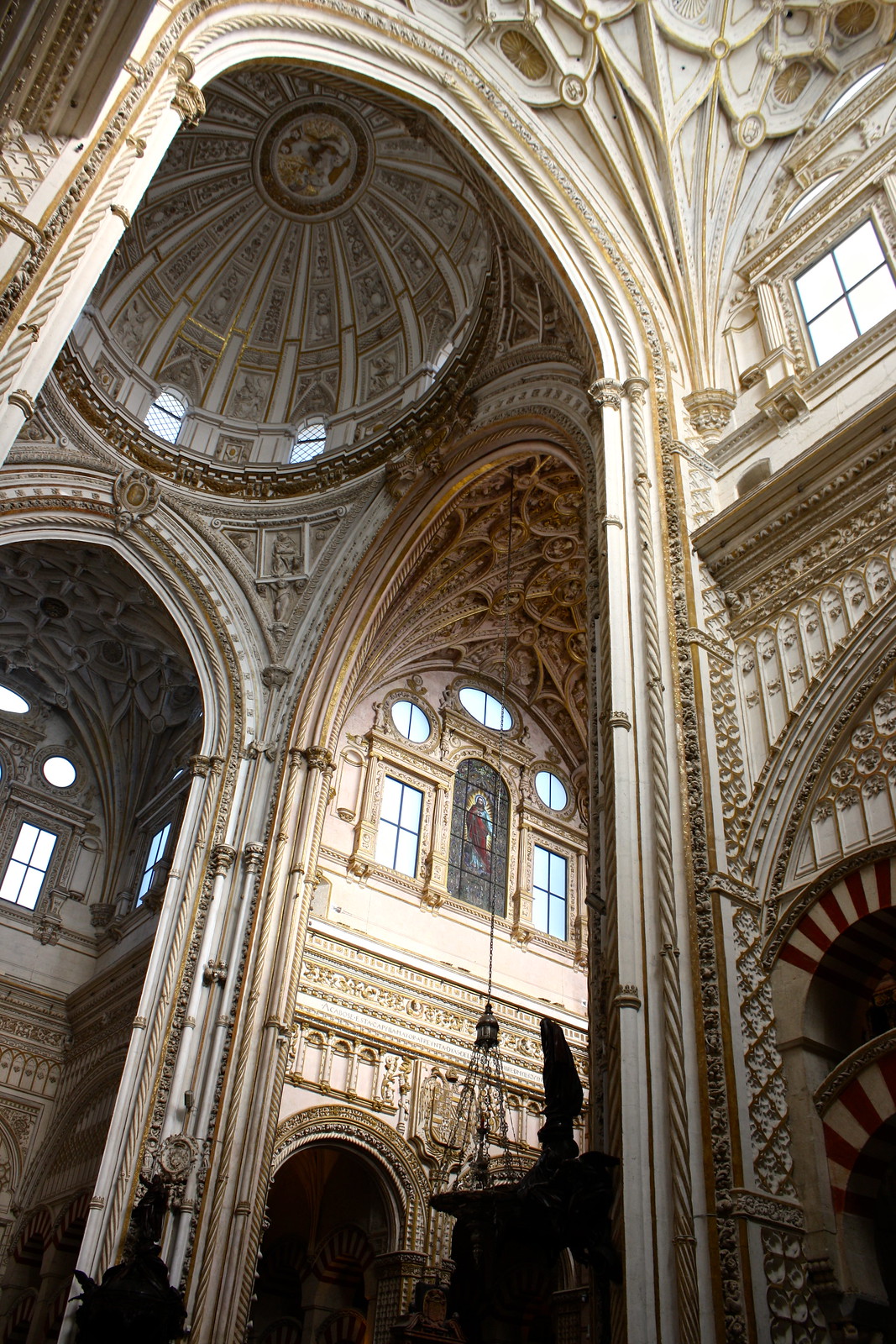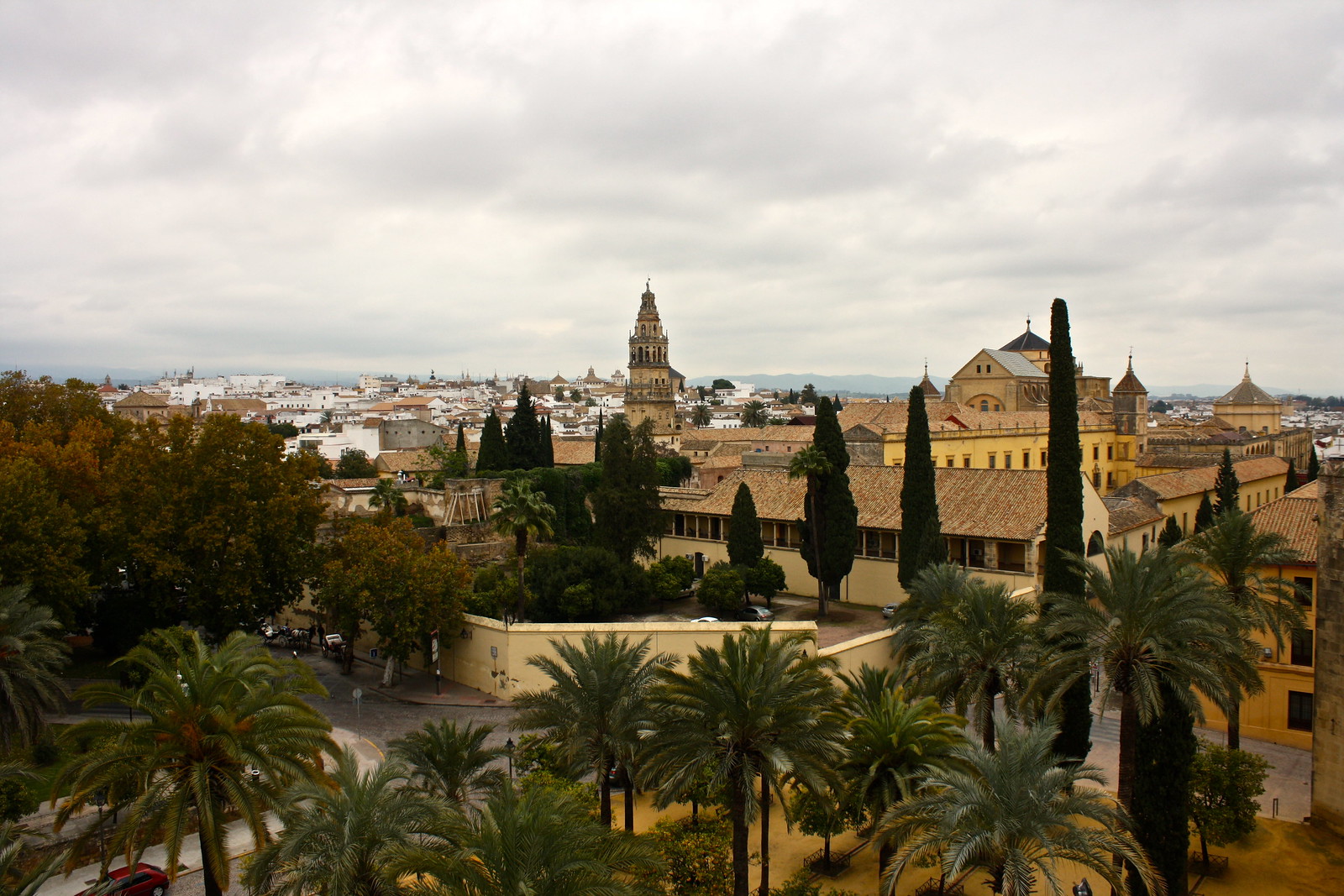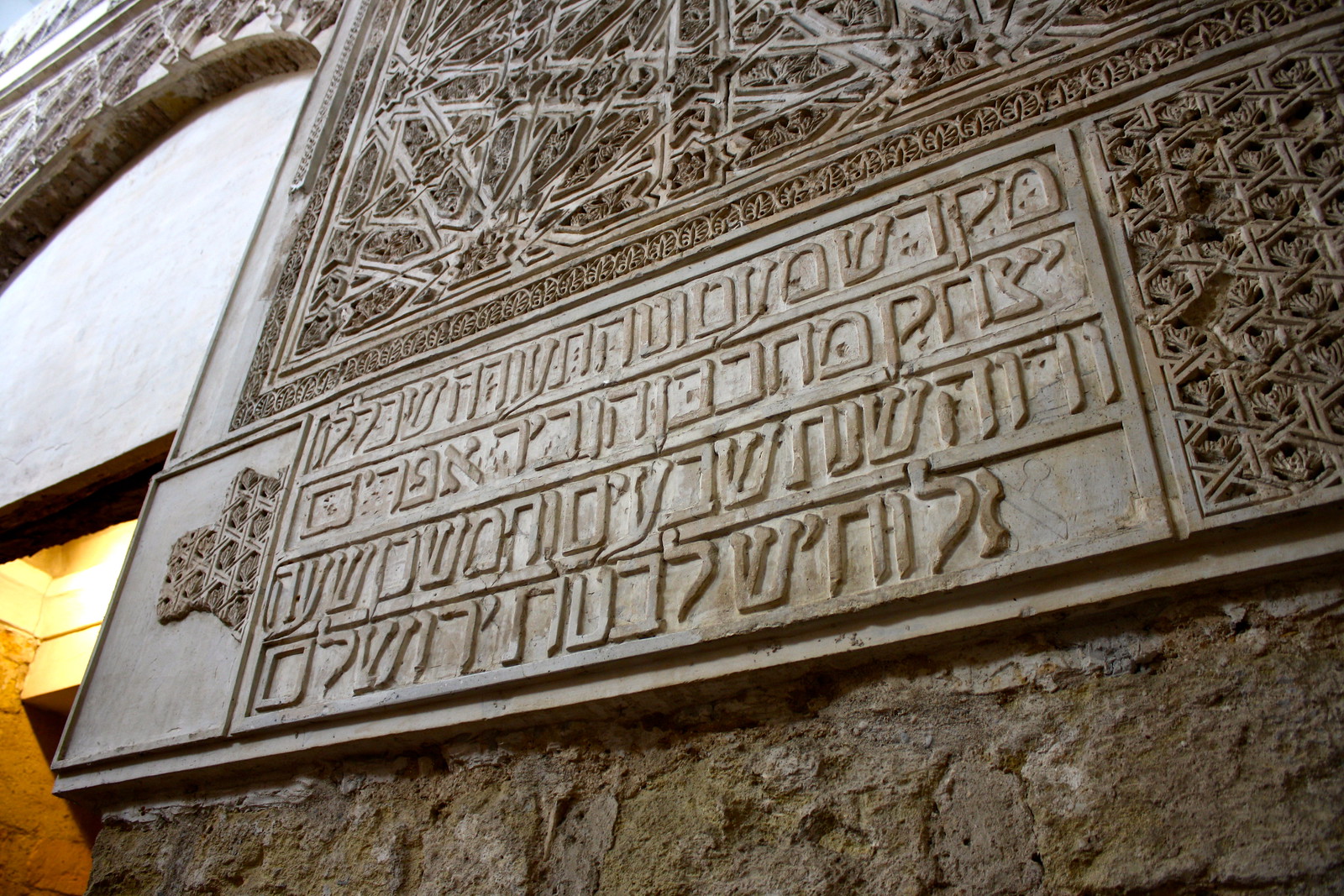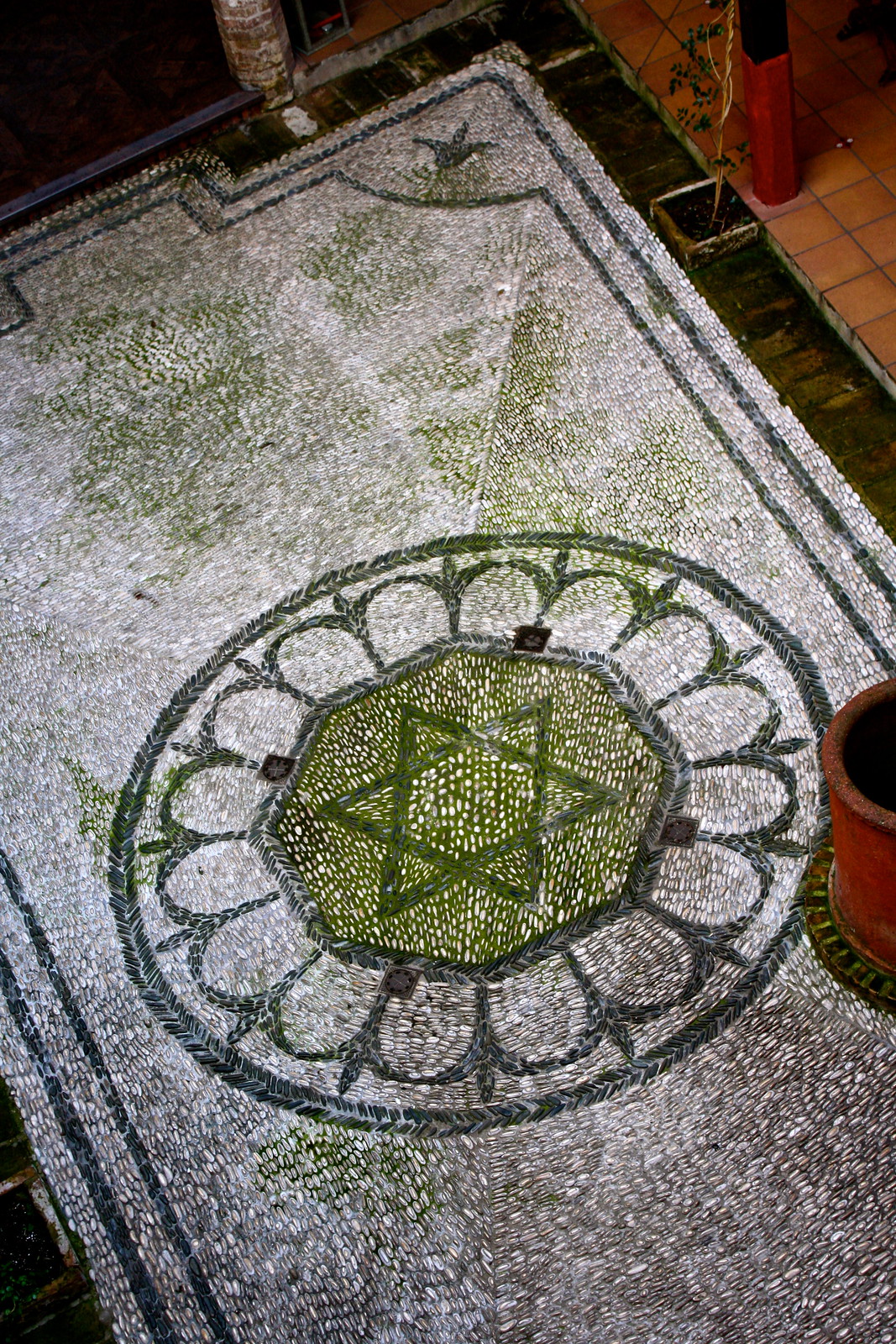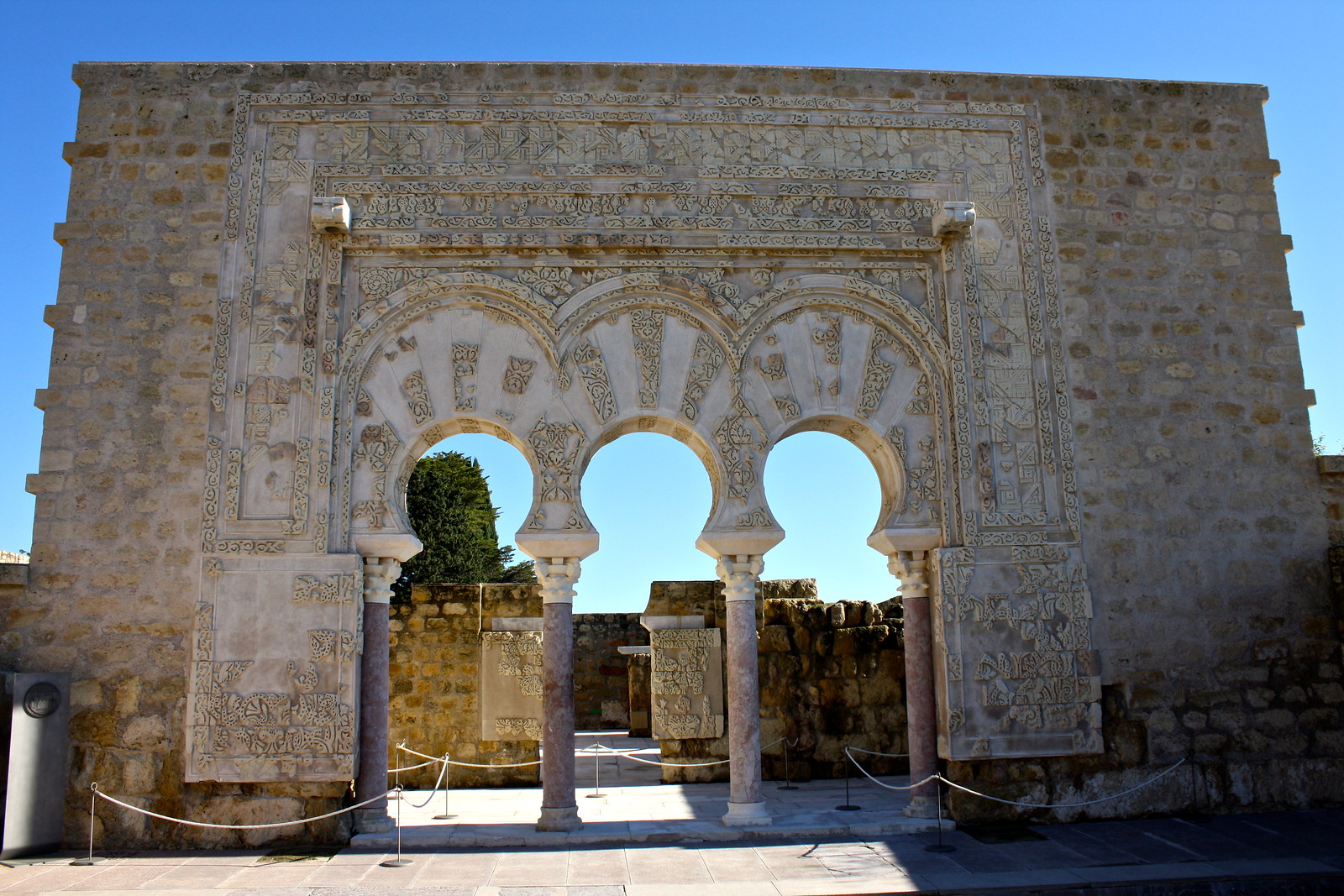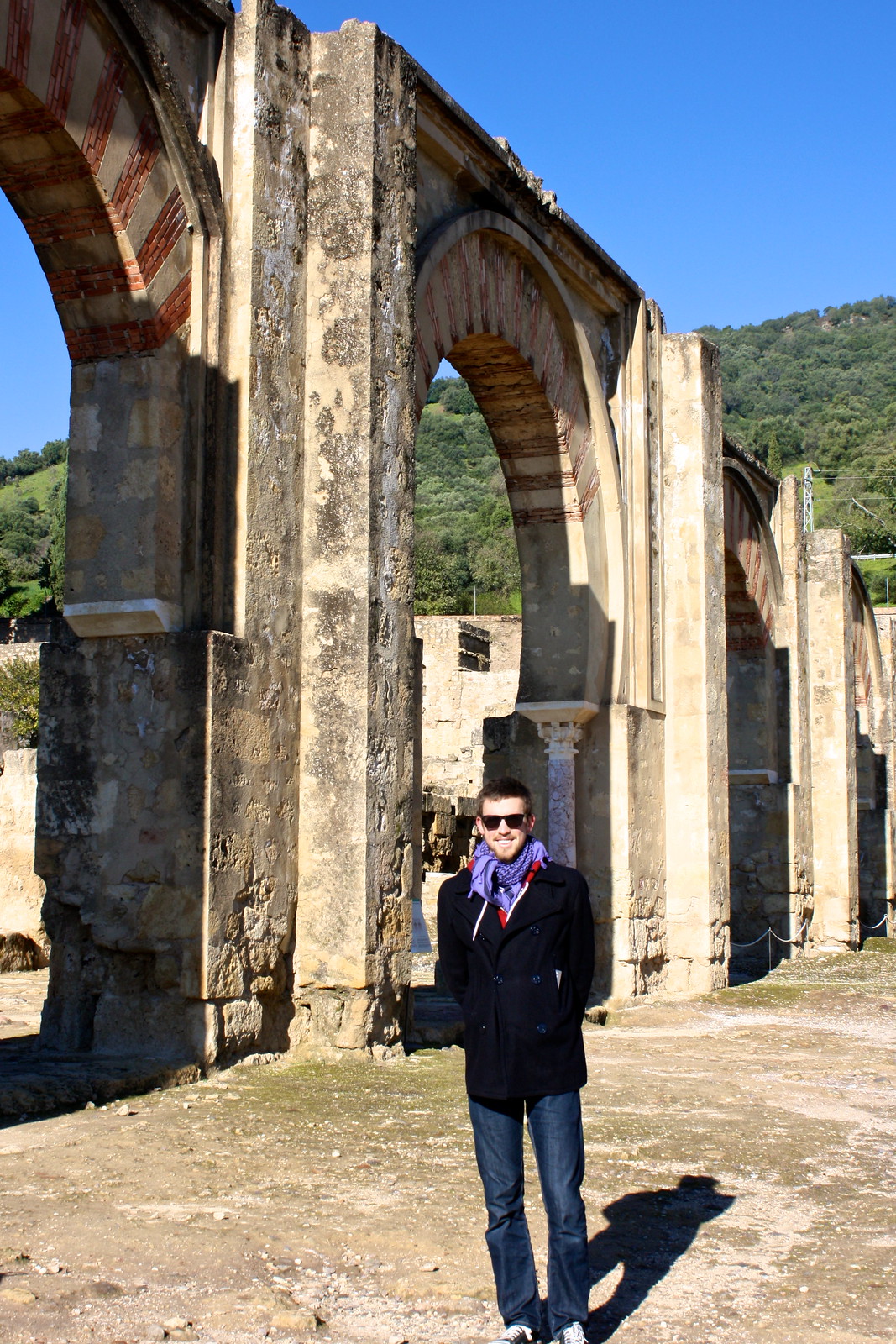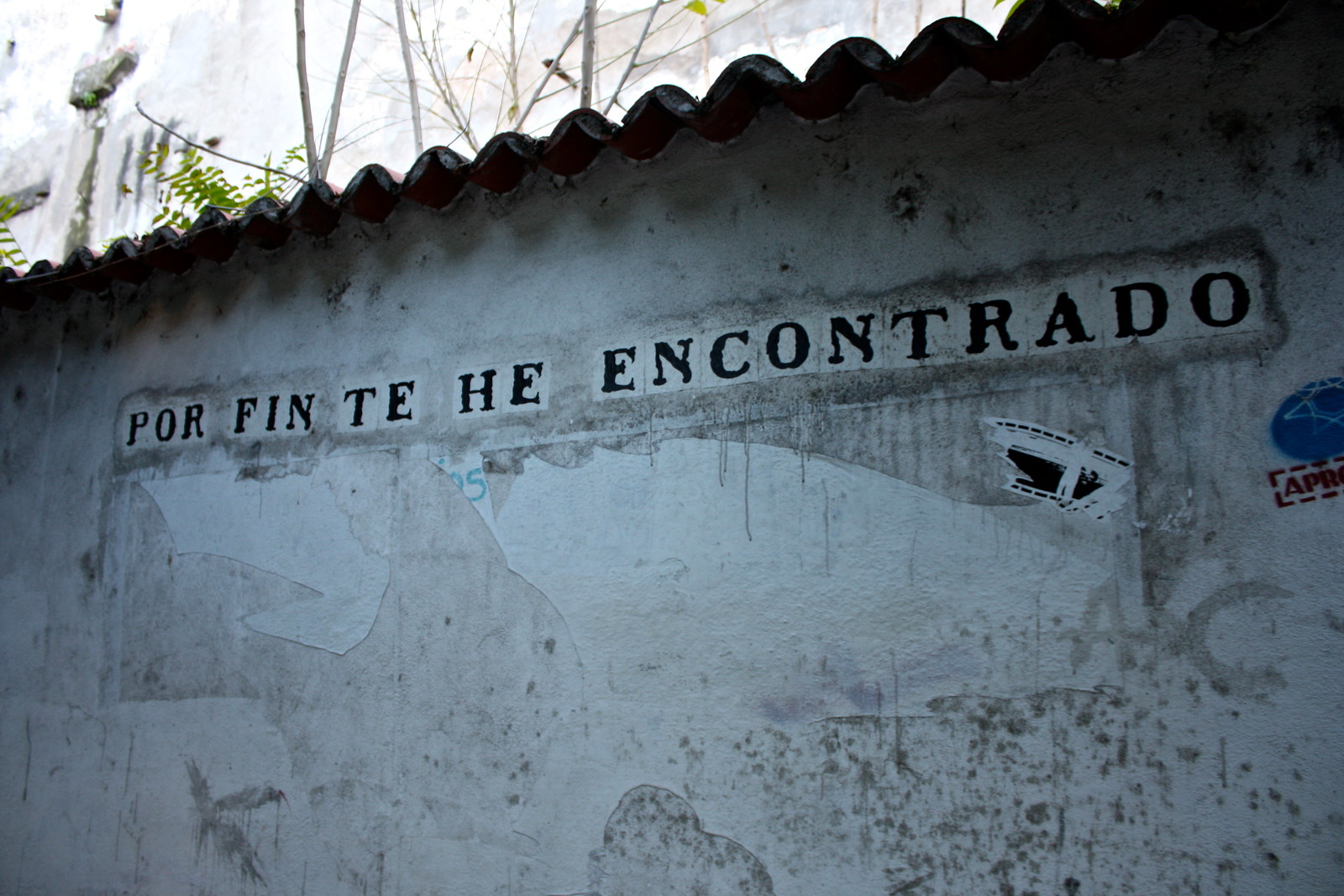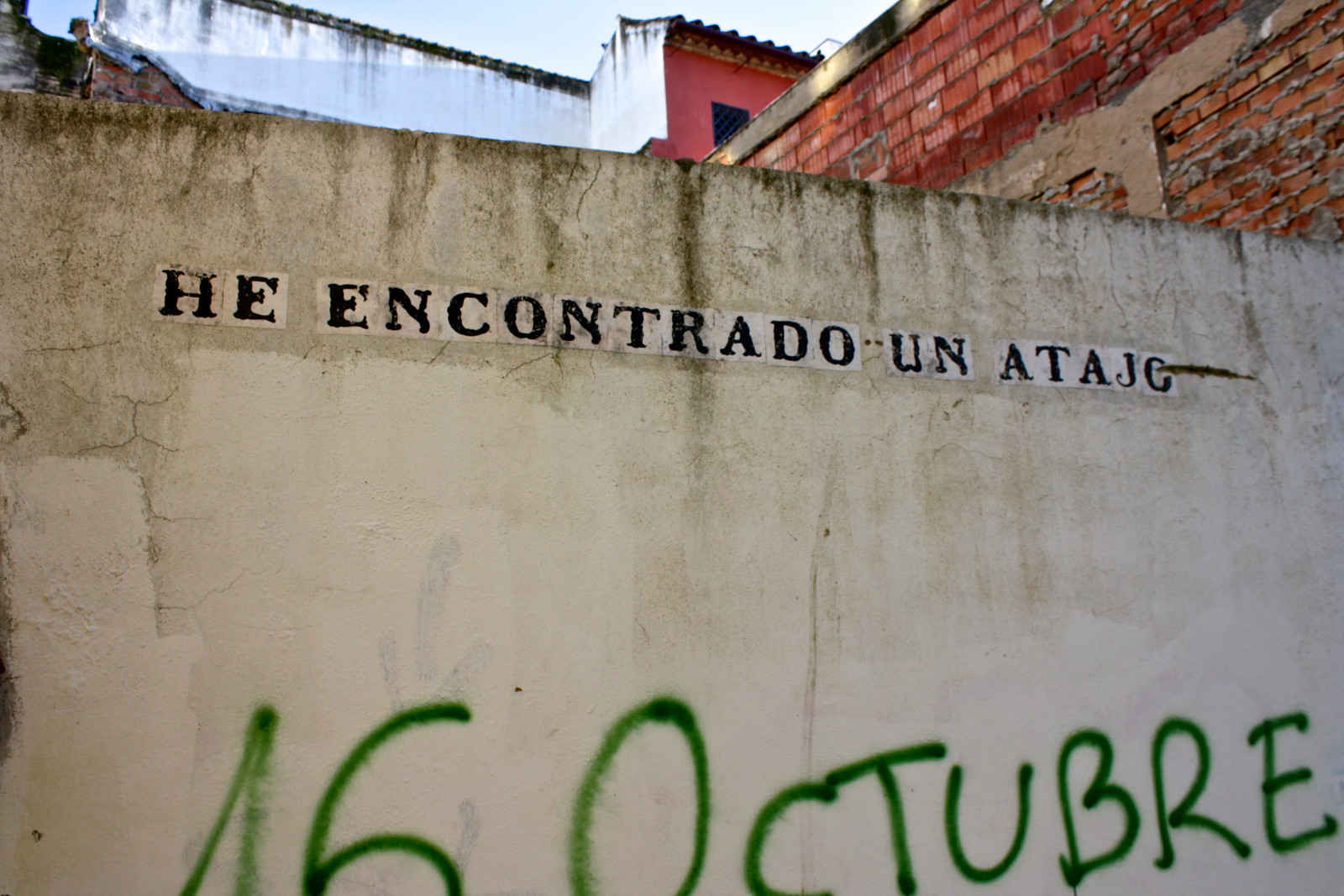After
Granada, the place I was most looking forward to visiting in Spain was Córdoba. I had learned much about the city in college while taking classes on Hispanic Culture & Civilization and Islam, and couldn’t wait to experience a locale where memories of three cultures—Christians, Jews, and Muslims—were preserved in buildings of such stunning architecture.
Three weeks ago, I finally got the chance to visit this city in the southern part of the country—and by visit, I mean wander in circles in the town’s old Jewish quarter. Read on to learn what I saw when I wasn’t lost!
Alcázar de los Reyes Cristianos
The
Alcázar de los Reyes Cristianos (“
Palace of the Christian Monarchs”) sits at the southwestern corner of Córdoba’s old town. The site itself has been a fortress since Roman times, and for ten years the castle served as a home base of sorts for the
Reyes Católicos—Ferdinand and Isabella. Here they planned their final attacks on the Muslim-ruled Kingdom of Granada (which fell in 1492) and agreed to finance Christopher Columbus’s journey to
India America.
There’s not much to write home about this place, but I did enjoy the views of southern Córdoba and that surreal feeling you get whenever you step into a place that’s just overflowing with historical significance, like the U.S. capitol building or Westminster Abbey in London.
Archaeological Museum
During an afternoon rainstorm, I ducked into the town’s
Museo Arqueológico (Archaeological Museum) for a visit, and didn’t regret anything about that decision. In fact, I ended up learning a lot about the city’s past in the short hour I spent there. The museum is rich with numerous artifacts—
silver denarius coins,
blue-tinted glasswork, and
countless inscriptions—from the Roman, Visigothic, and Moorish eras.
Another plus is that the current museum is built on top of the ruins of a Roman
amphitheater. You know, no big deal. The nearby ruins of a
Roman temple and the
Plaza Séneca (where the Roman philosopher is rumored to have been born) really tied my visit together well.
Mosque-Cathedral
Córdoba was number two on my bucket list of cities to visit mainly because it’s home to the
Mezquita-Catedral (“Mosque-Cathedral”). It’s not widely known that, for almost 800 years, there were kingdoms in Spain ruled by Muslims from North Africa—from the century following Muhammad’s death till just before Columbus sailed the Atlantic.
During this time, the city of Córdoba was the capital of many a kingdom and became a center of technology, learning, and architecture. Perhaps no better example of Spain’s Moorish heritage remains than the Great Mosque of Córdoba.
Built on the site of a Visigothic church, the mosque was expanded three times from its initial construction in 785 to the shape it has today. When the city was conquered by King Fernando III in 1236, he decided to spare the magnificent building the destruction that was so often the doom of mosques across re-conquered Spain in the Middle Ages. Little construction was done on it except for a so chapel where the original skylight was.
Then, in 1523, King Carlos V decided to insert a European-style cathedral, the
Capilla Mayor,
smack-dab in the middle of things. Upon its completion, however, he remarked that he had “destroyed something unique in the world.”
Nevertheless, it’s said that this awkward arrangement probably preserved the original mosque from demolition.
But in the interior, the cathedral has been seamlessly grafted into the original mosque structure. The architects tore out only those sections that were necessary and even incorporated striped arches into the supporting buttresses. Within the small, square, cross-shaped cathedral, light pours into the dim naves below. Of course, the reason the rest of the building is so dark is because all the doors to the original mosque were walled up after the
Reconquista; the Lonely Planet guide mentions that centuries ago these doorways “would have filled the original Mezquita with light.”
The experience was truly magical for yours truly, a student of history and Spanish language & culture. I went gaga walking under the endless overlapping red-and-white striped arches; seeing the contrast between light and darkness; and recognizing the transitions between the original naves, the Muslim enlargements, and the Christian additions.
Roman Bridge & Calahorra Tower
Due south from the Mosque-Cathedral flows the Guadalquivir River, perhaps most famously spanned by the
Puente Romano (“Roman Bridge”). Evidently not much of the original bridge remains after two millennia of repairs and improvements, but the fact that this stone bridge crosses the river reminds us that, for a time, an empire placed the same standard that it once put in Britain, Egypt, and Italy. Today the bridge has been pedestrianized, and therefore street performer-ized, too.
At the southern end of the bridge (i.e., the other side of the river) you can find the
Torre de la Calahorra or Calahorra Tower (
calahorra comes from the Arabic
qala’at al-hurriya, “free-standing fortress”).
Inside this renovated mini-fort is
a small museum highlighting the three cultures of Christians, Jews, and Muslims that once shared the Iberian peninsula together. At times the narration came across as abrasively pluralistic (e.g., going on and on about how spiritual the mosque was) and often simply cheesy (e.g., melodramatic descriptions of the Alhambra). However, I really appreciated the miniature mosque in one of the exhibit rooms. It was maybe 1-2 meters square with tiny arches and columns meticulously reproduced and even a prayer floor looking suspiciously like sushi mats. It showed what the building just across the river used to look like before the
Reconquista rolled in, illuminating the different sections of the mosque as they were built over time.
Jewish quarter & synagogue
Many Spanish cities have a
judería or Jewish quarter where, as the name would suggest, the town’s Jews once lived in isolation. Even my present town of
Úbeda has one on the south side of the old walled city. Not much is left of the 1,500-year Jewish presence in Spain, but in a handful of cities you can still see Jewish stars on some homes and maybe even a synagogue.
The
Sinagoga de Córdoba is advertised as
one of the three remaining synagogues in Spain (the other two are in
Toledo). I was surprised at how much is left of the original mudéjar-style plasterwork and Hebrew inscriptions. There’s not much to see inside the small building besides the central hall and translations of the Hebrew on the wall. But as the Lonely Planet guide describes it, those inscriptions, “eroded in mid-sentence[,] seem like poignant echoes of a silenced society.”
Just down the street I visited the
Casa de Sefarad, or Sepharad House (
sepharad is the name given by Jews to Spain; for example,
Sephardic Jews come from the Iberian peninsula).
This is the museum the synagogue should have had; it presented a great exposé of Jewish history and culture in Spain as well as an overview of the Inquisition (which affected Jews as well as non-conforming Christians). I got chills reading about how the Jews gradually lost their homes and rights in Medieval Spain—something that would be repeated over and over again in Europe up through World War II.
Ruins of Medina Azahara
For the last day I had in Córdoba I ended up, in fact, leaving town. A few
miles kilometers to the west you can find
the ruins of a short-lived capital city that served the Muslim Caliphate of Córdoba in the 10th century. Called the
Medina Azahara (from the Arabic
Madinat al-Zahra, “the brilliant city”), the archaeological site was a worthy half-day excursion from the main city. (To be honest, I was starting to get a little bored with the old town after two days!)
I caught a morning bus from Córdoba that first took me to the Madinat’s museum. Its exhibits were so-so, but
its introductory video was extremely helpful in explaining what a big deal the Madinat was in its time. Through 3D animations and voiceovers, I got to see how the ruins used to look before setting off to explore them. Today, the place looks pretty pitiful, but in the movie this palatial capital appeared outrageously lavish and precisely designed.
Another bus took me from the museum to the ruins themselves. They weren’t quite like the video made the originals out to be, but hey—they’re ruins, so I guess that’s the point. Still, that video made wandering through the stones and paths much more constructive since I was able to visualize what the buildings would have looked like as I walked past them. However, the star of the show, the well-preserved
Hall of Abd al-Rahman III, was closed for “conservation problems.” Oh well.
Street art
After the Mosque-Cathedral and the Madinat al-Zahra, I was most looking forward to experiencing the graffiti of Córdoba. Not just any street art, though, but thoughtful sayings posted on the white walls of the old town by the so-called
callejero pirata—
the Street Pirate of Córdoba.
A few years ago they began spray-painting these short quotes on sides of abandoned buildings using the same font that the road signs use, so at first you don’t notice that it’s actually graffiti. But then you see a “road sign” that reads
Finding My Place and you realize, “hey…that’s not that street’s name, right?”
I tried really hard to hunt them down but only ran across four in the three days I had there. Supposedly there are dozens but I think over the years most have worn away or gotten painted over. If you ever visit Córdoba, keep a lookout for these cool little sayings; they look
just like the street signs!
FOOD!
I’ll try to keep this section short and
sweet savory. One of the things I look forward to when traveling is trying out the local dishes (and desserts!). In Córdoba they serve something called
salmorejo cordobés, a cold tomato-based soup garnished with boiled eggs and
jamón ibérico (high-quality cured ham). The flavor of the soup itself is kind of difficult to describe; it feels like a refreshing fruit smoothie in your mouth but because it’s made of tomatoes and garlic, it tastes more like a garden than an orchard. Traditionally a summer dish, this creamy soup is served throughout the year.
Blogging note: I will be traveling around France and Spain over Christmas vacation
sans laptop; therefore, I am putting future blog posts on hold until after January 7th (read: I don’t have any finished blog posts in the queue, therefore none will be published!).
Question: What are your impressions or expectations about the city of Córdoba? What’s your opinion of the microcosm of Spanish history that is the Mosque-Cathedral? Comment below!
